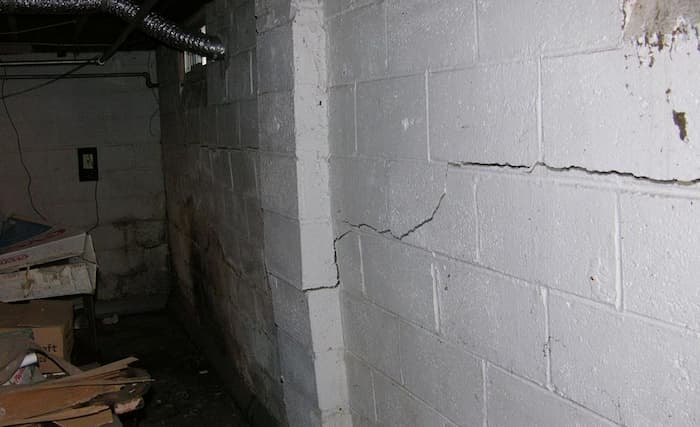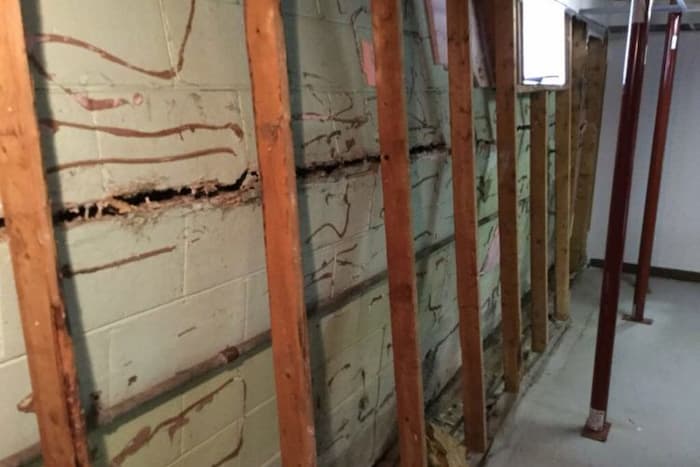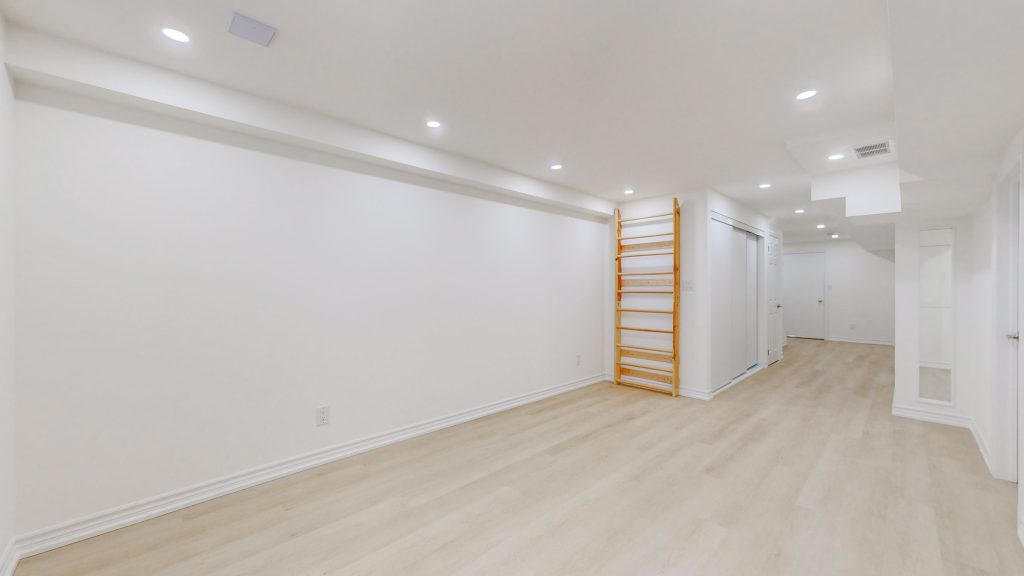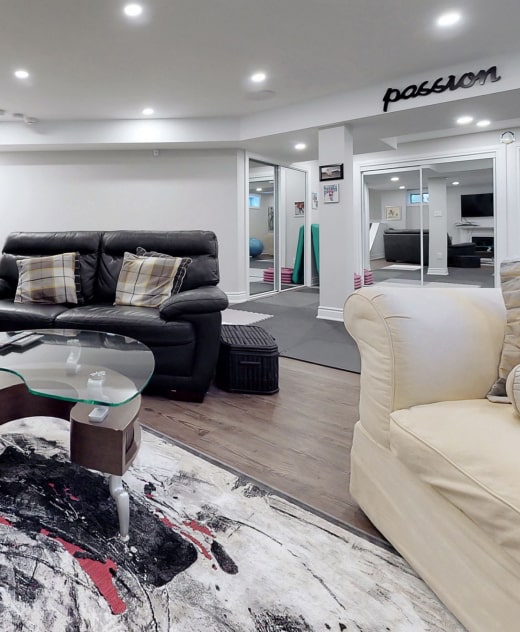How to Fix a Basement Wall that Is Bowing in
A bowed basement wall is usually curved from the outside to the inside. To identify such, look for a bulging wall that forms a convex shape.
A basement wall exhibiting signs of bowing may also be cracked, indicating a potential need for a basement renovation. The cracks could be horizontal or vertical. The cracks tend to open up more when it rains and contract during the hot weather.

What Causes Basement Walls to Bow in?
Basement walls start bowing in when the house’s foundation starts curving inwards. The main reason behind this is excessive external pressure from the surrounding soil and rocks. When the walls can’t withstand this pressure, that’s when they start forming a bow.
The three most common causes for bowed basement walls are:
- Freezing soil
The presence of a large portion of ice in the soil causes it to expand and push against the basement wall, causing bowing.
When it gets hot, the soil shrinks, leaving a void that could also cause the walls to crack.
- Heavy objects
When you place very heavy items like cars on the ground above the basement walls, their weight pushes the soil downwards and outwards. Over time, they cause the basement walls to bow.
- A clay soil base
Clay soil expands and contracts easily depending on the weather conditions. When it rains, the moisture content in the soil increases, causing it to expand. When it’s dry, the moisture content reduces, causing it to shrink. This repeated expanding and shrinking results in pressure differences and ultimately results in bowed basement walls.

Assessing Bowed Basement Walls
Before you start repairing bowed basement walls, you need to assess the level of damage. This way you get a rough idea of how much time and money it’ll cost. Part of the assessment involves measuring the degree of deflection. To do this you need a ruler and a weighted string.
Follow these simple steps:
- Identify a bowed section on the wall
- Hold the weighted string against the wall, from the ceiling to the floor
- Have someone else use a ruler to measure the distance between the string and the most inward section
- The measurement you get is the deflection distance
If the distance is less than 2 inches, that’s a minor deflection and can be left alone. If it’s between 2 to 4 inches, you can easily repair it using the methods we discuss in the next section. However, if the deflection distance is more than 6 inches, it means that the wall needs replacement.

How to Repair Bowed Basement Walls
Are bowed basement walls repairable? Fortunately, yes, it’s possible to salvage bowed basement walls. If bowed walls are left unfixed, they could develop cracks and eventually fall apart. Here are the different methods as explained below:
Using Wall Anchors
Wall anchors are steel plates installed in the ground outside the foundation. They are connected to steel rods that pass through the basement wall, and a plate or anchor is attached to the wall inside the basement. By tightening these anchors, you can slowly pull the wall back into its original position.
This also stabilizes the wall on a permanent basis by transferring pressure to the solid ground outside.
When it’s best:
- Ideal for moderate to severe bowing (up to 4 inches of deflection).
- They work best when there is enough space outside the wall to install external anchors.
Using Force Wall Braces
This method uses vertical steel beams that are attached at the top to the joists of your home and at the bottom to the basement floor, and the beams counteract the pressure of the soil inside and help straighten the wall over time.
This is a non-invasive method, as it does not require any external excavation work.
There are two types:
- Steel I-beams are the most common and effective.
- Straps, usually carbon fiber or steel straps that are attached directly to the wall surface.
When it is best:
- Ideal for mild to moderate curvature (up to 2-3 inches of deflection).
- Great if you have limited access to anchors from the outside.
Using Carbon Fibers
Carbon fiber tapes are super-strong woven materials that are glued with epoxy resin directly to the inside of the warped wall. They do not stretch or tear, making them ideal for stabilizing walls and preventing further displacement. They require no excavation or complicated installation—just a clean wall surface for bonding.
Advantages:
- Minimal disruption—no excavation required.
- Low profile — you can easily finish your basement around them.
- Strong enough for minor to moderate bowing.
When it’s best:
- Ideal for walls with less than 2 inches of bowing or early signs of inward displacement.
Complete Wall Replacement (Last Resort)
In extreme cases (deflection greater than 6 inches), the wall may be too damaged to use anchors or braces. The only safe option is to completely rebuild the wall.
This involves excavating around the wall, removing the old wall, and pouring new concrete.

How to Prevent Basement Walls from Bowing
As a homeowner, it’s very easy for you to put preventative measures in place to protect your basement walls. To do so, put the following into practice:
- Install a drain that catches groundwater and prevents it from penetrating the surface
- Fix damaged gutters that cause water to form pools near the basement walls
- Move heavy items further away from areas above the basement
- Remove soils that expand and contract easily from around the basement walls. Replace clay soil with sandy soil
Know When to Call the Experts
If you don’t know how to fix a basement wall that’s bowing in, you need not worry. Call (647) 428-0007 to get professional help. CSG Renovation is your best bet when it comes to repairing or replacing bowed basement walls because they specialize in this kind of work.
When you fix a basement wall, you avoid other problems that are a result of the cracks. These include mold, stains, and water leaks. Take this issue seriously because it compromises the stability of your basement and the house as a whole. You may need basement underpinning to prolong the life of your home.
In addition, consider ideas for renovations to your basement.





